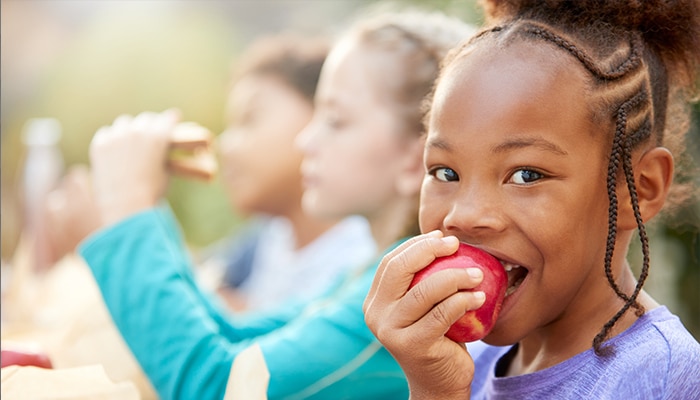While we believe that the books and resources recommended may be of value to you, keep in mind that these are suggestions only and you must do your own due diligence to determine whether the materials are appropriate and suitable for your use. PNC has no sponsorship or endorsement agreement with the authors or publishers of the materials listed.
HEALTHY ME

Healthy Eating
Children will create a collage of healthy foods.

Lesson Objective
Children will understand the importance of healthy food in keeping their bodies healthy.
ScienceArt
What You'll Need
- Cut out pictures of healthy food choices from old magazines and grocery store advertisements
- 12” white paper plates – 1 per child
- Glue
- Scissors
- Crayons
What To Do
- Using the cut out foods, begin a discussion with the children about the role food plays in keeping their bodies healthy (see Did You Know?).
- Tell the children they will be using pictures of foods to make a collage of their favorite healthy foods.
- Distribute paper plates, glue, scissors, and crayons.
- Place the cut out pictures on the tables for the children to look through and find which foods they like to eat, then glue them on their paper plate.
- If children cannot find a picture of their favorite food, invite them to draw it on their plate.
- Have each child present their plates to the class.
Resources
Home School Resources
Home educators: use these printable lesson PDFs to teach this lesson to your home schoolers. They're available in English and Spanish.
Content Provided By
Common Core State Standards Initiative – These lessons are aligned with the Common Core State Standards ("CCSS"). The CCSS provide a consistent, clear understanding of the concepts and skills children are expected to learn and guide teachers to provide their students with opportunities to gain these important skills and foundational knowledge [1]. Visit the CCSS


